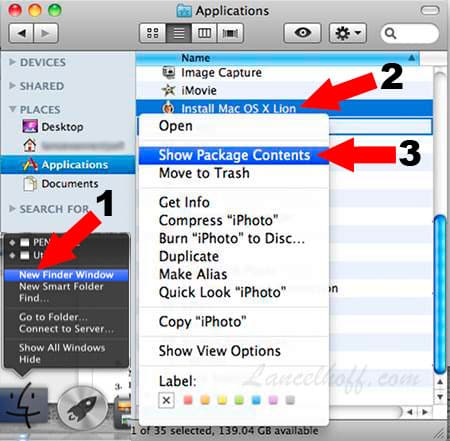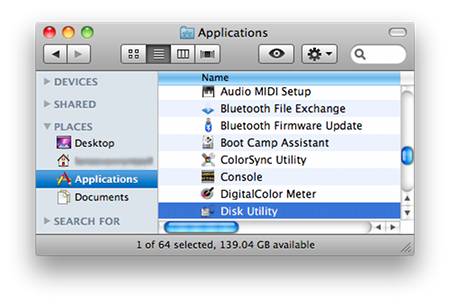Download Gardenscapes apk 4.9.0 for Android. Get ready to be introduced to a wonderful garden! Here's how to backup your Android device to a computer: Plug your phone into your computer with your USB cable On Windows, go to ‘My Computer' and open the phone's storage On Mac, open Android File. Installing OS X Lion sets up a hidden recovery partition on most systems, but if for some reason this is missing, then there are some options for restoring or otherwise using the functions this.

Lion Backup Android Apps
★ ★ ★ ★ ★ Rated (5.0 of 5.0) by 2 reviewers.October 10, 2018 at 4:15 PM
Categories: iTunes, iPhone | View Comments
Lion Backup Android To
You may need to access the files for your iPhone/iPad/iPod Touch backups on your computer in order to delete or rename them.
Each backup of a device is typically named by the unique device identifier (UDID). You can find your device's UDID by clicking on the Serial Number field in iTunes (which will switch it to your device identifier.) Some folders will have a date/time stamp after the UDID as well.
If you're using an iPhone XS or XS Max, iTunes won't show you your UDID, so you'll need to use one of our other methods to get your UDID on Windows and Mac here.
On a Mac your backups are in /Users/your username/Library/Application Support/MobileSync/Backup.
Android Backup And Restore Software
- Open Finder, and select the 'Go' menu at the top of the screen. Hold the Option key, and select the 'Library' menu option from the Go menu. (On OSX Lion and above, Library will only appear with the Option key held.)
- From Library, navigate to Application Support -> MobileSync -> Backup.
On Windows, your backups are stored in *your user account data folder*Application DataApple ComputerMobileSyncBackup. The user account data location varies for different versions and configurations of Windows.
- Windows 8 and 10: In the Windows search bar type
%appdata%(with the percents) and press return/enter. A file browser window will open to the Application Data folder. - Windows 7, Vista, XP: From the start menu, select Run. In the run box, type
%appdata%(with the percents) and press return/enter. A file browser window will open to the Application Data folder. - From there, navigate to Apple Computer -> MobileSync -> Backup.
Update May 18, 2018: There is now a version of iTunes available in the Microsoft Store as well as from the Apple website. If you installed iTunes from the Microsoft Store for Windows 10, then your backups are stored in a slightly different location.

Lion Backup Android Apps
★ ★ ★ ★ ★ Rated (5.0 of 5.0) by 2 reviewers.October 10, 2018 at 4:15 PM
Categories: iTunes, iPhone | View Comments
Lion Backup Android To
You may need to access the files for your iPhone/iPad/iPod Touch backups on your computer in order to delete or rename them.
Each backup of a device is typically named by the unique device identifier (UDID). You can find your device's UDID by clicking on the Serial Number field in iTunes (which will switch it to your device identifier.) Some folders will have a date/time stamp after the UDID as well.
If you're using an iPhone XS or XS Max, iTunes won't show you your UDID, so you'll need to use one of our other methods to get your UDID on Windows and Mac here.
On a Mac your backups are in /Users/your username/Library/Application Support/MobileSync/Backup.
Android Backup And Restore Software
- Open Finder, and select the 'Go' menu at the top of the screen. Hold the Option key, and select the 'Library' menu option from the Go menu. (On OSX Lion and above, Library will only appear with the Option key held.)
- From Library, navigate to Application Support -> MobileSync -> Backup.
On Windows, your backups are stored in *your user account data folder*Application DataApple ComputerMobileSyncBackup. The user account data location varies for different versions and configurations of Windows.
- Windows 8 and 10: In the Windows search bar type
%appdata%(with the percents) and press return/enter. A file browser window will open to the Application Data folder. - Windows 7, Vista, XP: From the start menu, select Run. In the run box, type
%appdata%(with the percents) and press return/enter. A file browser window will open to the Application Data folder. - From there, navigate to Apple Computer -> MobileSync -> Backup.
Update May 18, 2018: There is now a version of iTunes available in the Microsoft Store as well as from the Apple website. If you installed iTunes from the Microsoft Store for Windows 10, then your backups are stored in a slightly different location.
- In the Windows search bar paste
%userprofile%AppleMobileSyncBackupand press return/enter. A file browser window will open to the iTunes backups folder.
I'd be remiss if I didn't say: Make sure you know what you're doing before you muck around in your iTunes backups :) Descargar programa para pdf gratis.
In case you hadn't heard, March 31 is World Backup Day. This year marks only the second time that this commemorative day will be celebrated, but we're giving it our full support. After all, if we can all come together and get behind World Rubber Day (September 12) and National Hot Dog Month (July), why not promote data protection?
In observance of World Backup Day part of the ExtremeTech staff is going to walk you through how we each backup our data. This has the potential to be one of the most interesting or most boring things we've ever done, so we'll be brief and try to keep the explanations of our byzantine strategies as clear as possible. When you're done reading, leave a comment below explaining how you protect all your precious 1s and 0s.
Tim Verry
I backup to two external drives, and one of them I send to either my parents or my friend's house to keep safe. Those backups are done every 6 months or so, which means a huge file dump. I also backup to a second internal hard drive regularly (I should probably look into just RAID1'ing the drives as it would accomplish what I'm doing automagically). I also use Skydrive, Dropbox, and Box.net for various important files, like photos and documents.
I don't have enough digital stuff hoarded to require a multi-drive NAS (yet) but that's what I would use if I needed more backup space than I could get from a single USB hard drive. Ever since The Great Formatting Disaster of 2009, I've learned that I can never have too many backups.
David Cardinal
As a photographer my images are my business' largest asset. Digital images are easier to backup than a wall of file cabinets full of slides, but they present their own problems — especially once they get into the terabytes. In my case, I start by having all my images on a high-speed, fault-tolerant, RAID5 array attached to my Photoshop workstation, for fast access and reliability.
Then, on a regular basis, I copy them to two separate NAS boxes, both configured for RAID5. The tool I use computes md5 checksums on the images and is smart enough to not overwrite a good copy with one that has been corrupted by some type of bit rot. It can also tell me when one of the backup images has been damaged the same way. RAID1 is even more reliable, if you can afford the additional drives needed.
Finally, at least once a year, a full copy gets made onto another set of drives and stored at a friend's house. I used to keep tapes in a safe deposit box at the bank, but eventually my backups got too big for an affordable box.
If you do use a cloning tool to help with your backups, make sure you don't shoot yourself in the foot by inadvertently deleting a file or folder on your main hard drive and having your tool merrily propagate the deletion on your backup drive.
Sebastian Anthony
I keep copies of important files in multiple locations and I don't mess around with RAID. I keep photos and documents synchronized between my desktop (10TB of hard drives), my NAS (another 10TB), and some are also stored on DVDs (in another physical location, instead my house burns down). I just use SyncToy (a basic Windows tool) to keep the copies mirrored and up-to-date.
Ray Walters
I, like many of you, use multiple services, all of which are free. I use Google Music for my tunes and then Dropbox (10GB) for files and the occasional media. I use RAID to store my crucial photos and media locally. Open Filer serves the rest at my home and office.
Sal Cangeloso
I keep all of my non-archived documents, videos, images, and so forth on a 2TB external hard drive. That drive is mirrored nightly onto a NAS using SyncBackSE. It's doing a differential so the updates are quick, the task is scheduled it happens when I'm sleeping, and the program logs everything so I know what's happened to my data. Past that I have a few important files that I've put in Dropbox and/or emailed to myself.
Before this I used the NAS with the 2TB disk in the middle, but as the NAS aged that was no longer a quick enough option. Now I get an extra layer of redundancy and I didn't have to replace my NAS. One day (soon) I'm going to backup the NAS and leave a copy at my parents' house.
I used to backup my laptop (a MacBook Pro) using wireless Time Machine but since Lion broke AFP I've started to just use an encrypted 1TB external hard drive. I usually do this on Mondays and Fridays. My only real offsite backup, sadly enough, is for my phone and tablet which use iCloud.
Ryan Whitwam
I try to make use of cloud services as much as possible to minimize the amount of manual backing up I need to do. All my documents are in Google Docs, and if anyone emails me a document, I immediately add it to Docs myself. My music too is kept in the cloud with Google Play Music.
I try to separate other files into two categories; content that I'm constantly updating, and long-term storage. Anything that I need to access often goes into Dropbox. I consider most photos to be in this group, and the Android Dropbox app makes this process automatic; I snap a photo, and it's in Dropbox.
Older files, and those that I don't need to update often, get backed up to a less convenient service like Box.net or Skydrive that offers more space. Anything of a sensitive financial or personal nature get encrypted before it goes into the cloud, though.
Lastly, once a month or so, I take out my external hard drive, and copy over all the local files I think I might want if the unforeseen happened. When I'm done, that drive goes in the fire safe at the back of the closet. This gives me at least a little security for the files too large to realistically live in the cloud.
Do you have an interesting backup strategy? Maybe you built something with FreeNAS or you have a 135TB storage pod? Leave a comment below.
